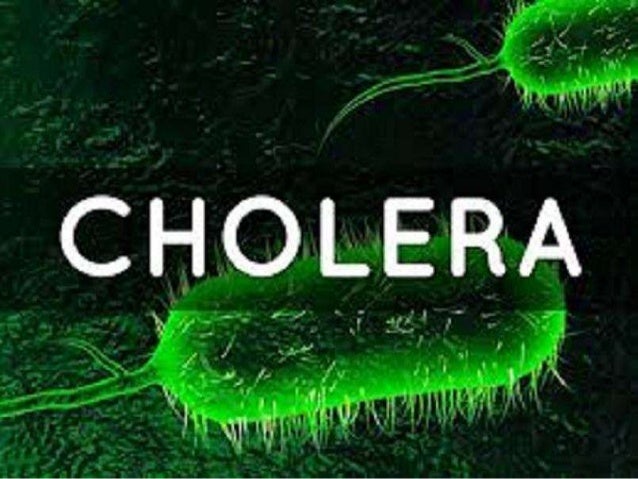This is an acute notifiable diarrhea disease which is caused
by vibrio cholerae usually occurring in epidemic forms. It is characterized by
profuse watery (rice water) stools. The incubation period for cholera is
between a few hours to 5 days.
Vector: Houseflies
Mode of Transmission
- Direct ingestion of infected faeces through hands.
- Indirect transmission through;
- Taking of food that is contaminated by the vibrio cholera.
- Drinking contaminated water.
- From soiled articles of infected individuals.
Clinical Features
- Sudden onset of profuse watery (“rice water”) stool
- Vomiting (mostly profuse)
- Diarrhea accompanied with gripping pain
- Rapid dehydration with its signs (Sunken eyes, wrinkled skin, fallen cheeks, depressed fontanels, etc.).
- Low pulse
- Thirst
- Weakness
- Shallow respiration
Diagnosis
- Clinical presentation.
- Direct stool microscopy.
Medical Management
- Replacement of fluids through intravenous infusion.
- Oral rehydration.
- Treatment with chloramphenicol and tetracycline.
Nursing Management
- Strict barrier nursing must be ensured.
- Nurse patient on cholera bed.
- Monitor IV fluids closely. Sometimes, you need to run intravenous fluids at fast rate.
- Practice concurrent disinfection of articles of infected persons.
- Give oral rehydration solution.
- Monitor intake and output chart carefully and record.
- Assess for dehydration.
- Give medications as ordered.
- Provide reassurance to patient and family members.
Prevention and Control
- Health education on the following;
- Hand washing thoroughly with soap under running water before eating.
- Drink treated water.
- Wash fruits and vegetables properly before eating.
- Cook food thoroughly and cover to prevent flies from sitting on the food.
- Treat all infected persons adequately and under strict barrier nursing technique
- Provision of portable water and toilet facilities.
- Isolation and notification of all suspected cases.
Complications
- Dehydration
- Renal failure
- Shock
- Coma
- Death
Read Also








0 Comments